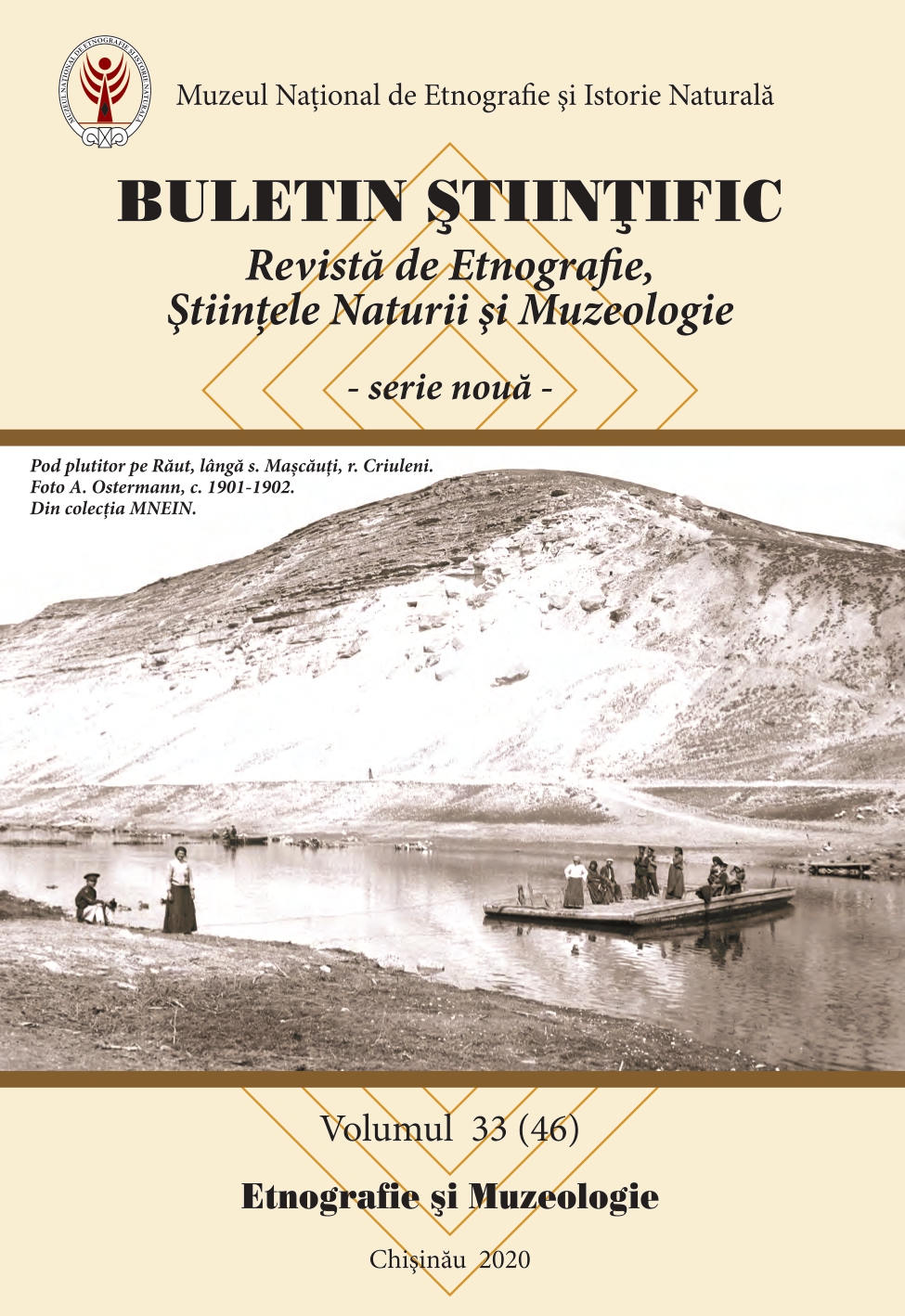ICONOGRAFIA POPULARĂ A SFINTEI PARASCHEVA. TEHNICĂ ŞI REPREZENTARE ÎN PATRIMONIUL MUZEULUI NAŢIONAL AL ŢĂRANULUI ROMÂN
THE FOLK ICONOGRAPHY OF SAINT PARASCHEVA. TECHNIQUE AND REPRESENTATION IN THE PATRIMONY OF THE ROMANIAN PEASANT'S NATIONAL MUSEUM
Author(s): Letiția Mirela CristeaSubject(s): Customs / Folklore, Visual Arts, Cultural Anthropology / Ethnology
Published by: Muzeul Național de Etnografie și Istorie Naturală
Keywords: Romanian Peasant’s National Museum;Saint Parascheva;Holy Friday;icon;iconographic center;cross;martyr;
Summary/Abstract: The Romanian Peasant's National Museum houses, in its collections, icons depicting a wide range of saints who have the role of protecting the peasant's house. One of the most frequently mentioned saints is the Moldavian protector – Saint Parascheva. Born in a village in Thrace, the young Petka chose to follow the path of monasticism and had led a simple life until her death. Due to a dream, her incorrupt body was discovered and housed in the church of “The Holy Apostles Peter and Paul” where it remained for two centuries. From there until the arrival to the building founded by Vasile Lupu in Moldavia, her relics have crossed a long way, reaching Bulgarians, Turks, Byzantines, and finally being deposited in the church of the Three Holy Hierarchs in Iasi, a religious settlement where they can also be seen today. Numerous works have been written about the life of the saint, the best known being “Cartea românească de învăţătură” (“Romanian book for studying”) and “Viaţa şi petrecerea Cuvioasei maicei noastre Parascheva cea nouă din Epivata” (“Life and death of our devoutly Mother Parascheva the New from Epivata”). From the plan of religious literature, Saint Parascheva descends to that of traditions and customs where her Christian cult overlaps with that of Holy Friday, taking on its attributes. In the patrimony of the Romanian Peasant's National Museum, Saint Parascheva is represented in icons from Transylvania (Nicula, Gherla, Sebeş, Făgăraş, Ţara Bârsei), as well as from the Serbian Banat. The evolution of her representations can be noticed during the study of the mentioned centers, starting with the simplicity of Nicula and ending with the complexity of the icons in the Serbian Banat. Whether it is painted on wood or on glass, Saint Parascheva represents, for any viewer, an ideal, combining humanity, reflected by the borrowing of features encountered in the villagers, with holiness, obtained by preserving religion and by living in accordance with Christian simplicity.
Journal: Buletin Științific. Revistă de Etnografie, Științele Naturii și Muzeologie
- Issue Year: 33/2020
- Issue No: 33
- Page Range: 154-167
- Page Count: 14
- Language: Romanian

